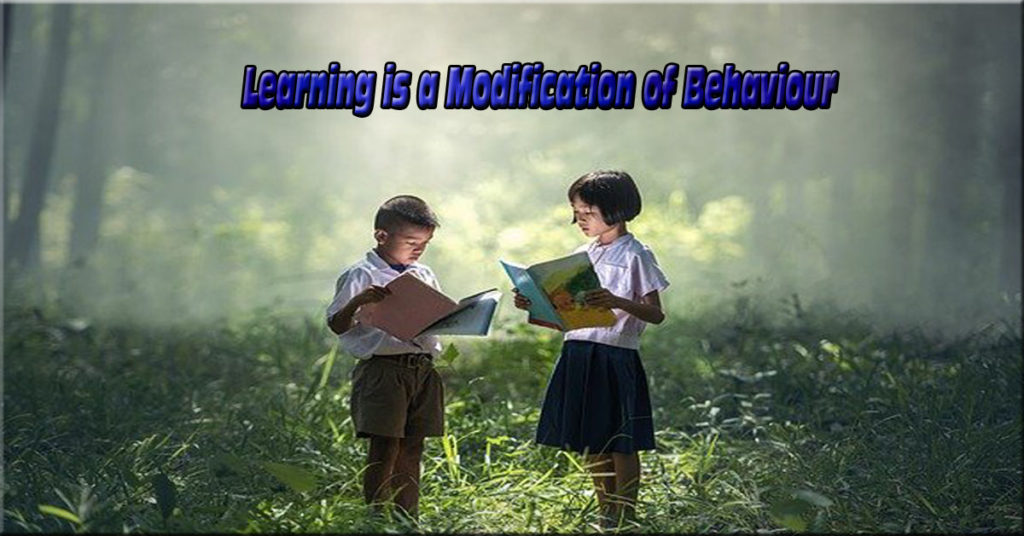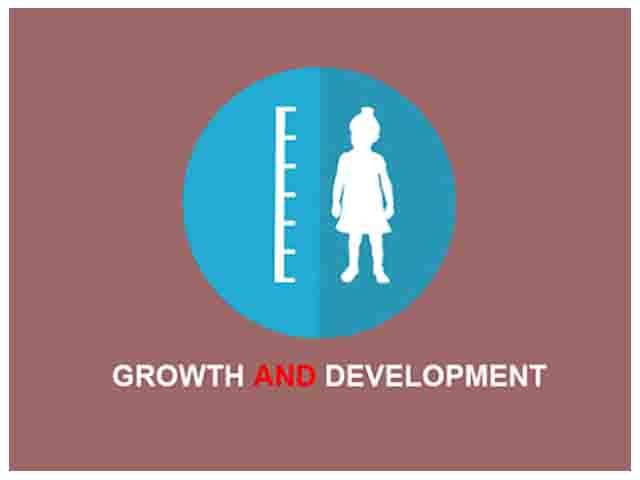Learning is the modification of behavior
Before studying “The top 6 learning methods in defining learning as the modification of behavior”, it must be understood that learning is a process and the different characteristics of learning.
Learning: as a process
Many people think that learning is confined only to the classroom and it is the sole responsibility of the teacher to impart learning. Thus for some, learning is equated with classroom teaching and school education. But this meaning of learning is narrowly conceived.
Learning is not at all confined to the four walls of the classroom. It extends beyond the classroom and continues throughout the life of an individual.
Learning of an individual characterize his whole life it is very difficult to give a universally acceptable definition of learning because various theories developed by psychologists attempt to define learning from different angles the following are some of the important meaning and definition of learning.
Learning is the modification of behavior
In a broader sense learning is the modification of behavior that is relatively permanent and is the result of one’s experience. The concept of change is inherent in learning. In other words, learning of an individual involved some changes in his behavior in a desirable direction. This change is the result of his own experience.
This change in his behavior enables him to adjust to his environment. The process of change that takes place during learning is called the learning process. Any situation which brings about changes in our behavior is called learning material.
Hilgard definition
According to Hilgard, “learning as a process by which an organism as a result of its interaction in a situation, acquires a new model of behavior which tends to persist and affect the general behavior pattern of the organism to some degree.”
Kingsley and Ralph Garry’s definition
According to them, learning is a process of adjustment through the modification of behavior. Such modification in behavior enables the individual to remove or overcome his huddles or barriers.
Kingsley and Ralph Garry state, “learning is a process by which an organism in satisfying his motivation, adapts or adjusts to a situation in which it must modify its behavior in order to overcome the obstacles.”
6 powerful methods.
Characteristics of Learning
From the above discussion and definitions who can list out the following characteristics of learning.
- learning means acquisition, retention, and modification of experience.
- it means establishing a new relationship between stimulus and response.
- it is a process of adjustment to the environment.
- it includes all activities which leave a permanent effect on the individual.
- it involves the synthesis and Organisation of old and new experiences resulting in a new model of behavior.
- learning modify spare, but all changes in behavioral not learning changes may be brought by help, maturation, and drugs but these are not learning.
- learning is possible on the cognitive-affective and cognitive sides. acquisition of knowledge is the cognitive modification of emotions is effective and acquisition of skills and habits is cognitive. learning is also defined therefore as the acquisition of knowledge, skills, and attitudes
Top 6 Learning Methods (modification of behavior)
Behaviour is produced by internal and external forces acting on the individual. Such forces activate the individual to think, to feel, and to act thereby bringing about modification of his old experiences.
The internal forces include instincts, motives, interests, and emotions or feelings. Outside forces consist of the requirements of the society, rewards and incentives, threats, and dangers. expectations and achievements. Needs or wants and basic instincts.
motivate the individual to modify his behavior or experiences to satisfy the needs. The individual adopts different methods to learn and modify his behaviors.
1. The trial and error method
Learning takes place through a process of trial and error or approximation and correction. The individual may make a number of attempts or trials out of which a few may help him to reach the goal.
Thus, the person may go on making trials until he makes correct responses to reach the goal and this correct response (modified behavior) becomes a part of his learning. This method was suggested by E.L. Thorndike. an American Psychologist.
2. The conditioning method
This method was suggested by Ivan Pavlov, a Russian Physiologist. During his experiments on the dogs, he discovered this method of learning. According to this method, learning takes place through a process of conditioning of responses.
It means learning occurs when a correct response is linked with an original stimulus through rehearsals or repetitions. New habits may be formed and old habits may be modified through conditioning. Even we form new attitudes and can modify old attitudes through a process of conditioning.
3.Insight method
To learn new things, to adjust to a problematic situation, and to explore out new modes of behavior at times, we apply our insight(informal) or perception of the relationships in a problematic situation. The situation consists of the organism. the goal, the environment, and the obstacles.
Learning occurs all of a sudden through the spontaneous application of insight Generally we solve problems or discover out new ideas or works in the field of science, literature, art, craft, and architecture by applying our insight.
So to say all creative contributions of men may be attributed to his power of insight. Insightful learning is the major contribution of the Gestalt school of psychology headed by Kohler. Wertheimer and Kuffka, the German psychologists. (For details of the above three methods refer to theories of learning written in the subsequent chapter.)
4.Method of Motivation
When the individuals are motivated by some means to learn a new thing or to solve a problem or to find means of adjustment, they develop a readiness of mind, This readiness enables them to modify their experience and thereby they learn more and more.
There are different methods of motivation like rewards and praises, encouraging creative ideas in writings and drawings, competitions, excursions and visits dramatization of subjects, and display of audiovisual aids. Adequate motivation results in effective learning.
5.Methods of Transfer of learning
We adjust to new situations by applying our old experiences or learning. It is called the transfer of learning because learning in one situation is transferred to a second situation to enable the individual to adjust to the second situation.
We cannot learn everything in the classroom or society, What we can do is that we can apply our previous experiences to solve problems in similar situations. We can transfer our habits, skills, attitudes, and training to adjust to a new situation.
6.Method of Imitation (Mimesis)
It is the general tendency shown by an individual to take over from others their modes of action, feeling, and thoughts. Food, dress, and talk habits are imitated by children from others.



Comments are closed.